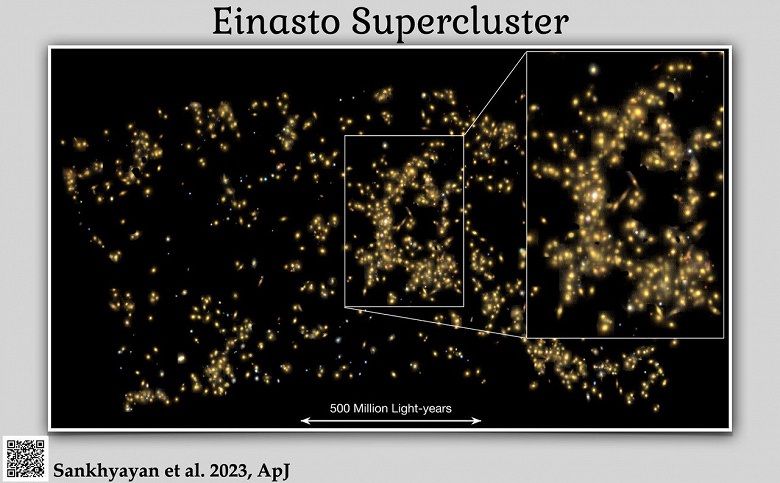The typical mass of superclusters exceeds the mass of the Sun by 6,000,000 times
An international team of scientists led by astronomers from the Tartu Observatory of the University of Tartu has discovered many superclusters in the Universe. One of these superclusters is the «Einasto Supercluster», which was named after Professor Jaan Einasto, a pioneer in this field of research, who celebrated his 95th birthday on February 23.
Superclusters are the largest and most massive clusters of galaxies in the Universe. The results of the study significantly expanded the understanding of these structures, and also helped in the search for answers to questions about their formation.
In the course of the study, scientists determined that the typical mass of superclusters exceeds the mass of the Sun by 6 million times, and the average size is 200 million light years. For comparison, these superclusters are 2000 times larger than our Milky Way galaxy.
The Einasto Supercluster, the most massive yet discovered, is located about 3 billion light-years from Earth. This colossal structure contains a mass equivalent to about 26 trillion Suns.
A beam of light emitted from one end of the Einasto Supercluster would take 360 million years to reach the other end. Professor Jaan Einasto's significant contribution to the study of superclusters makes it possible to name this structure in his honor.
A team of astronomers studied the properties of 662 superclusters. They found that galaxy clusters inside superclusters are heavier than those outside. This indicates that the evolution and growth of galaxies in clusters is different from that occurring outside them.
Despite the significant mass of superclusters, it is distributed evenly throughout the volume, making them less dense compared to galaxies. However, this density is sufficient for the gravity of superclusters to influence the movement of matter inside them, including dark matter.
The discoveries also showed that galaxies within superclusters exhibit slower expansion rates compared to the overall expansion rate of the Universe. This is explained by the gravitational attraction of the supercluster, which «holds» galaxy and counteracts expansion. However, this attraction is not strong enough for superclusters to become a gravitationally bound system. Ultimately, the influence of dark energy overcomes the gravitational pull of the supercluster.
Researchers also discovered a correlation between the density and size of superclusters, revealing an inverse quadratic relationship.
The study's authors emphasized the importance of international cooperation. The results of this study were facilitated by the participation of scientists from Estonia, India, Japan, Spain and Finland.

